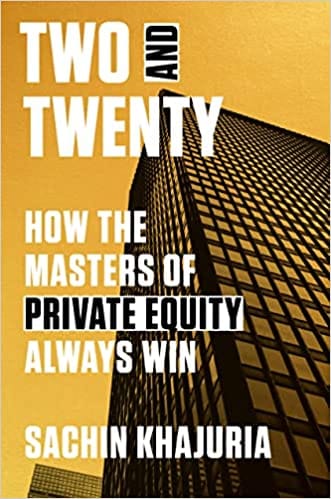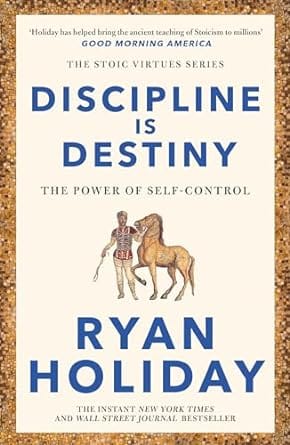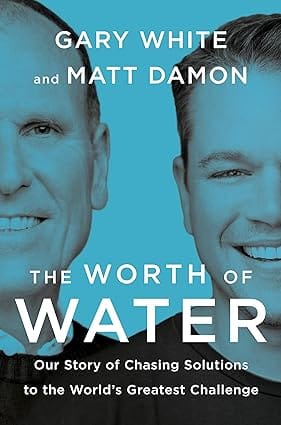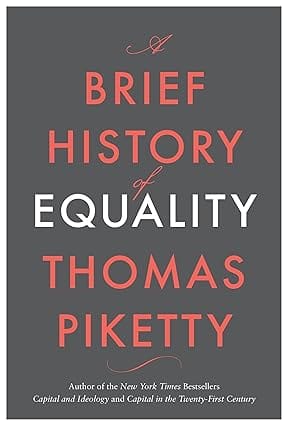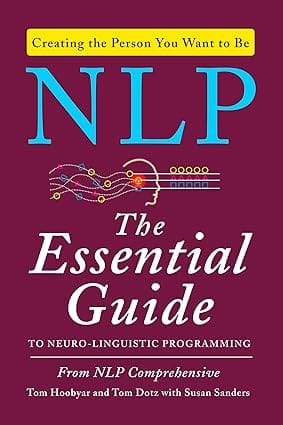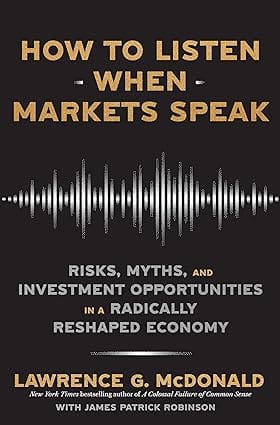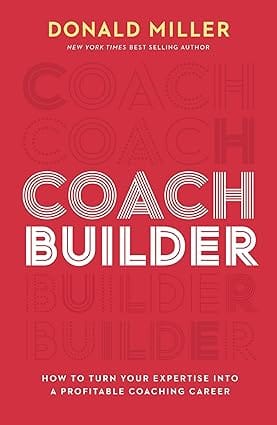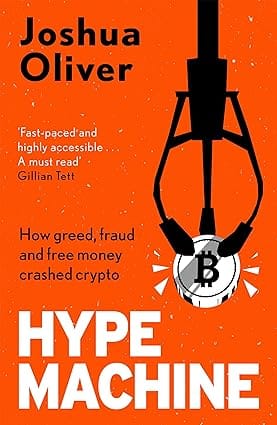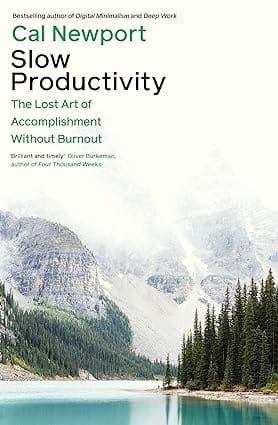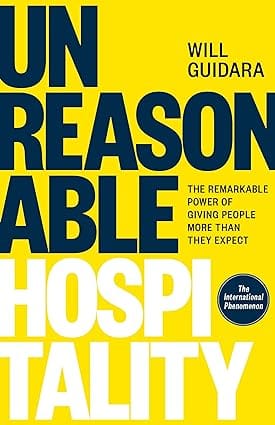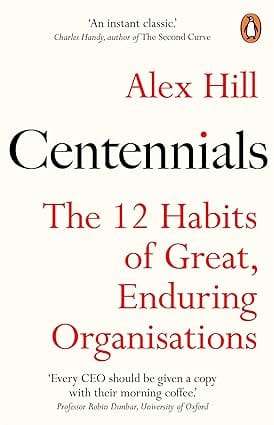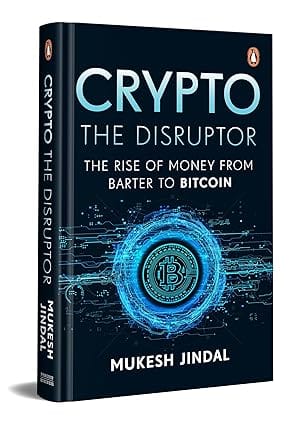WELCOME TO MIDLAND BOOK SHOP!
SHOP FOR
- Contemporary Fiction
- Contemporary Fiction
- Children
- Children
- Comics & Graphic Novels
- Comics & Graphic Novels
- Non-Fiction
- Non-Fiction
- Fiction
- Fiction
Shop No.20, Aurobindo Palace Market, Hauz Khas, Near Church +91 9818282497 | 011 26867121 110016 New Delhi IN
Midland The Book Shop ™
Shop No.20, Aurobindo Palace Market, Hauz Khas, Near Church +91 9818282497 | 011 26867121 New Delhi, IN
+919871604786 https://www.midlandbookshop.com/s/607fe93d7eafcac1f2c73ea4/6468e33c3c35585403eee048/without-tag-line-480x480.png" [email protected]9780593239599 6384b7025396892a3ebb93c1 Two And Twenty How The Masters Of Private Equity Always Win https://www.midlandbookshop.com/s/607fe93d7eafcac1f2c73ea4/6385ec10fab3ba0bf9c22f65/51vg47urxal-_sx329_bo1-204-203-200_.jpg 9780593239599
The first true insider’s account of private equity, revealing what it takes to thrive among the world’s hungriest dealmakers
“Brilliant . . . eloquently takes readers inside the heroic world of private equity . . . [an] essential read.”—Forbes
ONE OF THE MOST ANTICIPATED BOOKS OF THE SUMMER—Bloomberg
Private equity was once an investment niche. Today, the wealth controlled by its leading firms surpasses the GDP of some nations. Private equity has overtaken investment banking—and well-known names like Goldman Sachs and Morgan Stanley—as the premier destination for ambitious financial talent, as well as the investment dollars of some of the world’s largest pension funds, sovereign wealth funds, and endowments. At the industry’s pinnacle are the firms’ partners, happy to earn “two and twenty”—that is, a flat yearly fee of 2 percent of a fund’s capital, on top of 20 percent of the investment spoils.
Private equity has succeeded in near-stealth—until now. In Two and Twenty, Sachin Khajuria, a former partner at Apollo, gives readers an unprecedented view inside this opaque global economic engine, which plays a vital role underpinning our retirement systems. From illuminating the rituals of firms’ all-powerful investment committees to exploring key precepts (“think like a principal, not an advisor”), Khajuria brings the traits, culture, and temperament of the industry’s leading practitioners to life through a series of vivid and unvarnished deal sketches.
Two and Twenty is an unflinching examination of the mindset that drives the world’s most aggressive financial animals to consistently deliver market-beating returns.
“Brilliant . . . eloquently takes readers inside the heroic world of private equity . . . [an] essential read.”—Forbes
ONE OF THE MOST ANTICIPATED BOOKS OF THE SUMMER—Bloomberg
Private equity was once an investment niche. Today, the wealth controlled by its leading firms surpasses the GDP of some nations. Private equity has overtaken investment banking—and well-known names like Goldman Sachs and Morgan Stanley—as the premier destination for ambitious financial talent, as well as the investment dollars of some of the world’s largest pension funds, sovereign wealth funds, and endowments. At the industry’s pinnacle are the firms’ partners, happy to earn “two and twenty”—that is, a flat yearly fee of 2 percent of a fund’s capital, on top of 20 percent of the investment spoils.
Private equity has succeeded in near-stealth—until now. In Two and Twenty, Sachin Khajuria, a former partner at Apollo, gives readers an unprecedented view inside this opaque global economic engine, which plays a vital role underpinning our retirement systems. From illuminating the rituals of firms’ all-powerful investment committees to exploring key precepts (“think like a principal, not an advisor”), Khajuria brings the traits, culture, and temperament of the industry’s leading practitioners to life through a series of vivid and unvarnished deal sketches.
Two and Twenty is an unflinching examination of the mindset that drives the world’s most aggressive financial animals to consistently deliver market-beating returns.
Review
“A true insider’s account of the industry.”—Fortune
“Khajuria believes private equity deserves to be defended. . . . [Deal] sketches supply helpful information about the structure of private equity funds. . . . The vignettes enable Khajuria to show the wide range of industries and transactions in which private equity now operates. . . . He suggests that private equity is too big and has insinuated itself too deeply into American life to be stopped. That may be the book’s most persuasive point.” —The Wall Street Journal
“[Two and Twenty is] an excellent primer on the industry, from how things work at the very top to the nuts and bolts of its vast influence around the globe.”—Bloomberg Businessweek
“[Sachin Khajuria] demystifies the private equity world.”—Financial Times
“Khajuria believes private equity deserves to be defended. . . . [Deal] sketches supply helpful information about the structure of private equity funds. . . . The vignettes enable Khajuria to show the wide range of industries and transactions in which private equity now operates. . . . He suggests that private equity is too big and has insinuated itself too deeply into American life to be stopped. That may be the book’s most persuasive point.” —The Wall Street Journal
“[Two and Twenty is] an excellent primer on the industry, from how things work at the very top to the nuts and bolts of its vast influence around the globe.”—Bloomberg Businessweek
“[Sachin Khajuria] demystifies the private equity world.”—Financial Times
About the Author
Sachin Khajuria is a former partner at Apollo, one of the world's largest alternative asset management firms, and is also an investor in funds managed by Blackstone and Carlyle, among other investment firms. He has twenty-five years of investment and finance experience. Sachin holds two degrees in economics from the University of Cambridge. He divides his time between New York, Switzerland, and London.
Excerpt. © Reprinted by permission. All rights reserved.
Chapter One
The Best Game in Town
The world economy is broken. Underlying fissures created by subprime mortgage losses have cracked open, with a devastating effect on the global financial system. Ordinary citizens are staring down the barrel of an ugly recession. Unemployment is soaring, on an unshakable course to double digits, and homeowners are drowning in foreclosure. The Federal Reserve has slashed interest rates as a credit crunch grips. Governments are forced to turn to their tools of last resort: colossal stimulus measures and nationalization plans to save households and corporations. Then, a week after the U.S. government is forced to bail out mortgage backers Fannie Mae and Freddie Mac, the unthinkable happens: Lehman Brothers, a major investment bank, files for bankruptcy. It is the largest bankruptcy in history.
It is 2008.
Inside the oak-paneled boardroom on the thirty-seventh floor of the Seagram Building in Midtown Manhattan, eleven partners of a well-known private equity firm discuss these events, what might happen next, and how they can profit from the crisis. One of the firm’s investors is a German retirement fund for state employees, where the average salary is thirty thousand euros per year. These government workers in Bavaria have no idea that there is an ultra-wealthy asset manager in New York working hard on their behalf. Right now the firm is hunting for a smart bargain in their hometown, Munich.
The Founder of the Firm sits at the head of the oval French walnut table that dominates the room. Ten chairs are arranged for the other partners to use. These seats are made of the same elegant wood as the table but without armrests. The Founder’s chair is different. It is made of a titanium alloy, like the million-dollar staircase in the lobby of the Firm’s offices, and it pivots and reclines with ease—more throne than seat. No one dares occupy it when the Founder is absent. The spotlights are so bright that they would not look out of place in an emergency room. Through the floor-to-ceiling windows, those assembled are able to survey the riches of Park Avenue, with its European boutiques and attractive layout, but with the world economy hanging in the balance, no one has the time to soak in the view.
It is 11:45 a.m., and the Founder’s schedule since he woke up six hours ago has been packed: a short helicopter ride from his beachfront residence in the Hamptons to New York, a competitive hour of tennis with a high-seeded U.S. Open player, and, over a light breakfast in a private dining room at the Harvard Club, a review of current economic data with a member of the board of the Federal Reserve.
The Founder has been a billionaire since his early forties. He is calm and assured, and he starts to talk to the room—to no one in particular and at the same time to all those assembled. His tone is soft, and his words are precise. His manner is awkward but commandingly so, a mix of deep experience and palpable threat. He leans forward as he speaks, resting his manicured hands on the yellow legal notepads and thick printouts of Excel models that cover the boardroom table in front of him. He dispenses his views with conviction, without hesitation or emotion, as if they are statements of fact rather than opinion. In over thirty years, he has lost money on deals just twice, and he displays the rarefied confidence of one who has earned the respect of others—even of his enemies. Amid the social and economic catastrophe raging outside the Firm, while everybody is preoccupied and nobody is watching, he is considering a new investment.
“I’ve seen this movie before,” he says. “Europe is a few short months behind the U.S. They will get hit hard—I think extremely hard—and they won’t know what hit them until it’s too late. We finalize our preparations to buy soon, because the price of these securities will be in free fall. Let’s get ready.”
Although the facial expressions of his colleagues are stone-cold, like the air in the building, they know the Founder is right. His partners at the Firm and the fifteen midlevel and junior executives sitting at the outer edge of the room digest the Founder’s order and plot the micro steps of how to execute it. Their eyes are sharp and their heads are turned, making sure they catch every nuance and gesture from the Founder as if they were made of pure gold. Everyone is wearing bespoke suits and expensive loafers, but the partners skip the ties. Three of the Firm’s lawyers are writing down notes off to the side, and their presence and occasional advice confers upon the discussion the privacy and confidentiality benefits of attorney-client privilege.
This is the Firm’s investment committee, the decision-making body made up of the partners as voting members and the rest of the Firm as observers and commentators. The committee meets every Monday, without fail, at 10:00 a.m. Eastern Time. For the last ninety minutes, the committee has torn apart the analysis contained in a forty-six-page investment memo for this prospective deal carefully put together by a deal team of three investment professionals. The team toiled around the clock for ten days to assemble the memo. This involved feedback calls on the last draft with each of the partners, as well as soliciting guidance from the Founder, before circulating a final version a few nights before. The investment memo contains concise inputs and exhaustive appendices from consultants, accountants, and lawyers, and finance terms from Wall Street’s biggest banks, but it is the committee’s dispassionate analysis of the deal that will drive the decision whether to proceed.
That judgment rests on the quality of replies to searing questions put to the deal team as a unit by the partners and a calibrated weighing up of whether the Firm’s investors will be adequately compensated for the risks of the bet. Whether it’s worth proceeding.
Over the weekend, the deal team fielded last-minute inquiries from every member of the committee. Some of the incoming commentary was hostile and cut open weaknesses in their work, meaning they would need to pull another all-nighter to prepare an addendum to the memo. Some feedback was encouraging and gave them confidence ahead of the meeting. Taken together, the input was meant to help the group get to the right answer about next steps, whether to proceed and, if so, on what terms. This is the birthing process of a private equity deal—a process designed to reveal the truth of the investment question at hand. But given the Founder’s remarks, the iterative calculus of do or don’t do is over—the approval to commit has been given in the guise of a friendly suggestion. The deal team must be ready to enter the market and buy quickly, without fear. It is time to be ruthless.
The target is called TV Corp, the largest free-to-air TV and radio broadcaster in Germany. The company was formerly owned by the Firm and is now publicly listed; vast files of information on the business and its competitors sit in the Firm’s archives. What’s more, the Firm has kept an eye on the company even after selling it off. Every quarter since exiting the business three years ago, the Firm’s analysts have collected operating and financial data from relevant sectors of the economy, such as advertising and Hollywood movies, and processed them into financial models. Friendly senior corporate executives provide timely commentary on what is happening on the shop floor in TV and radio broadcasting, helping to ensure that the Firm is well-informed on significant facts and trends that are relevant to TV Corp. The information set is also enriched by deals the Firm has analyzed but not closed in adjacent sectors of the economy or in neighboring markets, either because the terms were not right or because a rival beat the Firm to it. This includes potential investments in TV and radio stations in France and in Scandinavia, possible deals involving broadcast towers in the UK, and the failed acquisition of a consumer goods company in northern Europe that would advertise on channels such as those TV Corp runs.
And so, by staying current, by keeping abreast even after the first investment in the target is long gone, the Firm can analyze everything relevant to the company’s fortunes going forward in real time—from how much Procter & Gamble will spend on commercials for shampoo to the cost of screening Hollywood blockbusters to the reaction of trade unions and politicians to job cuts and restructurings. The data and the Firm’s history with the target have tipped the scales in the Firm’s favor. The Founder is in a strong position to make an audacious move on the company again—this time during a global economic earthquake, when nobody else is paying attention.
The Best Game in Town
The world economy is broken. Underlying fissures created by subprime mortgage losses have cracked open, with a devastating effect on the global financial system. Ordinary citizens are staring down the barrel of an ugly recession. Unemployment is soaring, on an unshakable course to double digits, and homeowners are drowning in foreclosure. The Federal Reserve has slashed interest rates as a credit crunch grips. Governments are forced to turn to their tools of last resort: colossal stimulus measures and nationalization plans to save households and corporations. Then, a week after the U.S. government is forced to bail out mortgage backers Fannie Mae and Freddie Mac, the unthinkable happens: Lehman Brothers, a major investment bank, files for bankruptcy. It is the largest bankruptcy in history.
It is 2008.
Inside the oak-paneled boardroom on the thirty-seventh floor of the Seagram Building in Midtown Manhattan, eleven partners of a well-known private equity firm discuss these events, what might happen next, and how they can profit from the crisis. One of the firm’s investors is a German retirement fund for state employees, where the average salary is thirty thousand euros per year. These government workers in Bavaria have no idea that there is an ultra-wealthy asset manager in New York working hard on their behalf. Right now the firm is hunting for a smart bargain in their hometown, Munich.
The Founder of the Firm sits at the head of the oval French walnut table that dominates the room. Ten chairs are arranged for the other partners to use. These seats are made of the same elegant wood as the table but without armrests. The Founder’s chair is different. It is made of a titanium alloy, like the million-dollar staircase in the lobby of the Firm’s offices, and it pivots and reclines with ease—more throne than seat. No one dares occupy it when the Founder is absent. The spotlights are so bright that they would not look out of place in an emergency room. Through the floor-to-ceiling windows, those assembled are able to survey the riches of Park Avenue, with its European boutiques and attractive layout, but with the world economy hanging in the balance, no one has the time to soak in the view.
It is 11:45 a.m., and the Founder’s schedule since he woke up six hours ago has been packed: a short helicopter ride from his beachfront residence in the Hamptons to New York, a competitive hour of tennis with a high-seeded U.S. Open player, and, over a light breakfast in a private dining room at the Harvard Club, a review of current economic data with a member of the board of the Federal Reserve.
The Founder has been a billionaire since his early forties. He is calm and assured, and he starts to talk to the room—to no one in particular and at the same time to all those assembled. His tone is soft, and his words are precise. His manner is awkward but commandingly so, a mix of deep experience and palpable threat. He leans forward as he speaks, resting his manicured hands on the yellow legal notepads and thick printouts of Excel models that cover the boardroom table in front of him. He dispenses his views with conviction, without hesitation or emotion, as if they are statements of fact rather than opinion. In over thirty years, he has lost money on deals just twice, and he displays the rarefied confidence of one who has earned the respect of others—even of his enemies. Amid the social and economic catastrophe raging outside the Firm, while everybody is preoccupied and nobody is watching, he is considering a new investment.
“I’ve seen this movie before,” he says. “Europe is a few short months behind the U.S. They will get hit hard—I think extremely hard—and they won’t know what hit them until it’s too late. We finalize our preparations to buy soon, because the price of these securities will be in free fall. Let’s get ready.”
Although the facial expressions of his colleagues are stone-cold, like the air in the building, they know the Founder is right. His partners at the Firm and the fifteen midlevel and junior executives sitting at the outer edge of the room digest the Founder’s order and plot the micro steps of how to execute it. Their eyes are sharp and their heads are turned, making sure they catch every nuance and gesture from the Founder as if they were made of pure gold. Everyone is wearing bespoke suits and expensive loafers, but the partners skip the ties. Three of the Firm’s lawyers are writing down notes off to the side, and their presence and occasional advice confers upon the discussion the privacy and confidentiality benefits of attorney-client privilege.
This is the Firm’s investment committee, the decision-making body made up of the partners as voting members and the rest of the Firm as observers and commentators. The committee meets every Monday, without fail, at 10:00 a.m. Eastern Time. For the last ninety minutes, the committee has torn apart the analysis contained in a forty-six-page investment memo for this prospective deal carefully put together by a deal team of three investment professionals. The team toiled around the clock for ten days to assemble the memo. This involved feedback calls on the last draft with each of the partners, as well as soliciting guidance from the Founder, before circulating a final version a few nights before. The investment memo contains concise inputs and exhaustive appendices from consultants, accountants, and lawyers, and finance terms from Wall Street’s biggest banks, but it is the committee’s dispassionate analysis of the deal that will drive the decision whether to proceed.
That judgment rests on the quality of replies to searing questions put to the deal team as a unit by the partners and a calibrated weighing up of whether the Firm’s investors will be adequately compensated for the risks of the bet. Whether it’s worth proceeding.
Over the weekend, the deal team fielded last-minute inquiries from every member of the committee. Some of the incoming commentary was hostile and cut open weaknesses in their work, meaning they would need to pull another all-nighter to prepare an addendum to the memo. Some feedback was encouraging and gave them confidence ahead of the meeting. Taken together, the input was meant to help the group get to the right answer about next steps, whether to proceed and, if so, on what terms. This is the birthing process of a private equity deal—a process designed to reveal the truth of the investment question at hand. But given the Founder’s remarks, the iterative calculus of do or don’t do is over—the approval to commit has been given in the guise of a friendly suggestion. The deal team must be ready to enter the market and buy quickly, without fear. It is time to be ruthless.
The target is called TV Corp, the largest free-to-air TV and radio broadcaster in Germany. The company was formerly owned by the Firm and is now publicly listed; vast files of information on the business and its competitors sit in the Firm’s archives. What’s more, the Firm has kept an eye on the company even after selling it off. Every quarter since exiting the business three years ago, the Firm’s analysts have collected operating and financial data from relevant sectors of the economy, such as advertising and Hollywood movies, and processed them into financial models. Friendly senior corporate executives provide timely commentary on what is happening on the shop floor in TV and radio broadcasting, helping to ensure that the Firm is well-informed on significant facts and trends that are relevant to TV Corp. The information set is also enriched by deals the Firm has analyzed but not closed in adjacent sectors of the economy or in neighboring markets, either because the terms were not right or because a rival beat the Firm to it. This includes potential investments in TV and radio stations in France and in Scandinavia, possible deals involving broadcast towers in the UK, and the failed acquisition of a consumer goods company in northern Europe that would advertise on channels such as those TV Corp runs.
And so, by staying current, by keeping abreast even after the first investment in the target is long gone, the Firm can analyze everything relevant to the company’s fortunes going forward in real time—from how much Procter & Gamble will spend on commercials for shampoo to the cost of screening Hollywood blockbusters to the reaction of trade unions and politicians to job cuts and restructurings. The data and the Firm’s history with the target have tipped the scales in the Firm’s favor. The Founder is in a strong position to make an audacious move on the company again—this time during a global economic earthquake, when nobody else is paying attention.
in stockINR 719
1 1
Email ID already exists!
Your Current password is incorrect
Password Updated Successfully
Thanks for your Feedback
- Home
- Business And Economics
- Two And Twenty How The Masters Of Private Equity Always Win
Two And Twenty How The Masters Of Private Equity Always Win
ISBN: 9780593239599
₹719
₹899 (20% OFF)SIZE GUIDE
Sold By: Hauz Khas - Aurobindo Market
Details
- ISBN: 9780593239599
- Author: Sachin Khajuria
- Publisher: Currency
- Pages: 272
- Format: Hardback
Book Description
The first true insider’s account of private equity, revealing what it takes to thrive among the world’s hungriest dealmakers
“Brilliant . . . eloquently takes readers inside the heroic world of private equity . . . [an] essential read.”—Forbes
ONE OF THE MOST ANTICIPATED BOOKS OF THE SUMMER—Bloomberg
Private equity was once an investment niche. Today, the wealth controlled by its leading firms surpasses the GDP of some nations. Private equity has overtaken investment banking—and well-known names like Goldman Sachs and Morgan Stanley—as the premier destination for ambitious financial talent, as well as the investment dollars of some of the world’s largest pension funds, sovereign wealth funds, and endowments. At the industry’s pinnacle are the firms’ partners, happy to earn “two and twenty”—that is, a flat yearly fee of 2 percent of a fund’s capital, on top of 20 percent of the investment spoils.
Private equity has succeeded in near-stealth—until now. In Two and Twenty, Sachin Khajuria, a former partner at Apollo, gives readers an unprecedented view inside this opaque global economic engine, which plays a vital role underpinning our retirement systems. From illuminating the rituals of firms’ all-powerful investment committees to exploring key precepts (“think like a principal, not an advisor”), Khajuria brings the traits, culture, and temperament of the industry’s leading practitioners to life through a series of vivid and unvarnished deal sketches.
Two and Twenty is an unflinching examination of the mindset that drives the world’s most aggressive financial animals to consistently deliver market-beating returns.
“Brilliant . . . eloquently takes readers inside the heroic world of private equity . . . [an] essential read.”—Forbes
ONE OF THE MOST ANTICIPATED BOOKS OF THE SUMMER—Bloomberg
Private equity was once an investment niche. Today, the wealth controlled by its leading firms surpasses the GDP of some nations. Private equity has overtaken investment banking—and well-known names like Goldman Sachs and Morgan Stanley—as the premier destination for ambitious financial talent, as well as the investment dollars of some of the world’s largest pension funds, sovereign wealth funds, and endowments. At the industry’s pinnacle are the firms’ partners, happy to earn “two and twenty”—that is, a flat yearly fee of 2 percent of a fund’s capital, on top of 20 percent of the investment spoils.
Private equity has succeeded in near-stealth—until now. In Two and Twenty, Sachin Khajuria, a former partner at Apollo, gives readers an unprecedented view inside this opaque global economic engine, which plays a vital role underpinning our retirement systems. From illuminating the rituals of firms’ all-powerful investment committees to exploring key precepts (“think like a principal, not an advisor”), Khajuria brings the traits, culture, and temperament of the industry’s leading practitioners to life through a series of vivid and unvarnished deal sketches.
Two and Twenty is an unflinching examination of the mindset that drives the world’s most aggressive financial animals to consistently deliver market-beating returns.
Review
“A true insider’s account of the industry.”—Fortune
“Khajuria believes private equity deserves to be defended. . . . [Deal] sketches supply helpful information about the structure of private equity funds. . . . The vignettes enable Khajuria to show the wide range of industries and transactions in which private equity now operates. . . . He suggests that private equity is too big and has insinuated itself too deeply into American life to be stopped. That may be the book’s most persuasive point.” —The Wall Street Journal
“[Two and Twenty is] an excellent primer on the industry, from how things work at the very top to the nuts and bolts of its vast influence around the globe.”—Bloomberg Businessweek
“[Sachin Khajuria] demystifies the private equity world.”—Financial Times
“Khajuria believes private equity deserves to be defended. . . . [Deal] sketches supply helpful information about the structure of private equity funds. . . . The vignettes enable Khajuria to show the wide range of industries and transactions in which private equity now operates. . . . He suggests that private equity is too big and has insinuated itself too deeply into American life to be stopped. That may be the book’s most persuasive point.” —The Wall Street Journal
“[Two and Twenty is] an excellent primer on the industry, from how things work at the very top to the nuts and bolts of its vast influence around the globe.”—Bloomberg Businessweek
“[Sachin Khajuria] demystifies the private equity world.”—Financial Times
About the Author
Sachin Khajuria is a former partner at Apollo, one of the world's largest alternative asset management firms, and is also an investor in funds managed by Blackstone and Carlyle, among other investment firms. He has twenty-five years of investment and finance experience. Sachin holds two degrees in economics from the University of Cambridge. He divides his time between New York, Switzerland, and London.
Excerpt. © Reprinted by permission. All rights reserved.
Chapter One
The Best Game in Town
The world economy is broken. Underlying fissures created by subprime mortgage losses have cracked open, with a devastating effect on the global financial system. Ordinary citizens are staring down the barrel of an ugly recession. Unemployment is soaring, on an unshakable course to double digits, and homeowners are drowning in foreclosure. The Federal Reserve has slashed interest rates as a credit crunch grips. Governments are forced to turn to their tools of last resort: colossal stimulus measures and nationalization plans to save households and corporations. Then, a week after the U.S. government is forced to bail out mortgage backers Fannie Mae and Freddie Mac, the unthinkable happens: Lehman Brothers, a major investment bank, files for bankruptcy. It is the largest bankruptcy in history.
It is 2008.
Inside the oak-paneled boardroom on the thirty-seventh floor of the Seagram Building in Midtown Manhattan, eleven partners of a well-known private equity firm discuss these events, what might happen next, and how they can profit from the crisis. One of the firm’s investors is a German retirement fund for state employees, where the average salary is thirty thousand euros per year. These government workers in Bavaria have no idea that there is an ultra-wealthy asset manager in New York working hard on their behalf. Right now the firm is hunting for a smart bargain in their hometown, Munich.
The Founder of the Firm sits at the head of the oval French walnut table that dominates the room. Ten chairs are arranged for the other partners to use. These seats are made of the same elegant wood as the table but without armrests. The Founder’s chair is different. It is made of a titanium alloy, like the million-dollar staircase in the lobby of the Firm’s offices, and it pivots and reclines with ease—more throne than seat. No one dares occupy it when the Founder is absent. The spotlights are so bright that they would not look out of place in an emergency room. Through the floor-to-ceiling windows, those assembled are able to survey the riches of Park Avenue, with its European boutiques and attractive layout, but with the world economy hanging in the balance, no one has the time to soak in the view.
It is 11:45 a.m., and the Founder’s schedule since he woke up six hours ago has been packed: a short helicopter ride from his beachfront residence in the Hamptons to New York, a competitive hour of tennis with a high-seeded U.S. Open player, and, over a light breakfast in a private dining room at the Harvard Club, a review of current economic data with a member of the board of the Federal Reserve.
The Founder has been a billionaire since his early forties. He is calm and assured, and he starts to talk to the room—to no one in particular and at the same time to all those assembled. His tone is soft, and his words are precise. His manner is awkward but commandingly so, a mix of deep experience and palpable threat. He leans forward as he speaks, resting his manicured hands on the yellow legal notepads and thick printouts of Excel models that cover the boardroom table in front of him. He dispenses his views with conviction, without hesitation or emotion, as if they are statements of fact rather than opinion. In over thirty years, he has lost money on deals just twice, and he displays the rarefied confidence of one who has earned the respect of others—even of his enemies. Amid the social and economic catastrophe raging outside the Firm, while everybody is preoccupied and nobody is watching, he is considering a new investment.
“I’ve seen this movie before,” he says. “Europe is a few short months behind the U.S. They will get hit hard—I think extremely hard—and they won’t know what hit them until it’s too late. We finalize our preparations to buy soon, because the price of these securities will be in free fall. Let’s get ready.”
Although the facial expressions of his colleagues are stone-cold, like the air in the building, they know the Founder is right. His partners at the Firm and the fifteen midlevel and junior executives sitting at the outer edge of the room digest the Founder’s order and plot the micro steps of how to execute it. Their eyes are sharp and their heads are turned, making sure they catch every nuance and gesture from the Founder as if they were made of pure gold. Everyone is wearing bespoke suits and expensive loafers, but the partners skip the ties. Three of the Firm’s lawyers are writing down notes off to the side, and their presence and occasional advice confers upon the discussion the privacy and confidentiality benefits of attorney-client privilege.
This is the Firm’s investment committee, the decision-making body made up of the partners as voting members and the rest of the Firm as observers and commentators. The committee meets every Monday, without fail, at 10:00 a.m. Eastern Time. For the last ninety minutes, the committee has torn apart the analysis contained in a forty-six-page investment memo for this prospective deal carefully put together by a deal team of three investment professionals. The team toiled around the clock for ten days to assemble the memo. This involved feedback calls on the last draft with each of the partners, as well as soliciting guidance from the Founder, before circulating a final version a few nights before. The investment memo contains concise inputs and exhaustive appendices from consultants, accountants, and lawyers, and finance terms from Wall Street’s biggest banks, but it is the committee’s dispassionate analysis of the deal that will drive the decision whether to proceed.
That judgment rests on the quality of replies to searing questions put to the deal team as a unit by the partners and a calibrated weighing up of whether the Firm’s investors will be adequately compensated for the risks of the bet. Whether it’s worth proceeding.
Over the weekend, the deal team fielded last-minute inquiries from every member of the committee. Some of the incoming commentary was hostile and cut open weaknesses in their work, meaning they would need to pull another all-nighter to prepare an addendum to the memo. Some feedback was encouraging and gave them confidence ahead of the meeting. Taken together, the input was meant to help the group get to the right answer about next steps, whether to proceed and, if so, on what terms. This is the birthing process of a private equity deal—a process designed to reveal the truth of the investment question at hand. But given the Founder’s remarks, the iterative calculus of do or don’t do is over—the approval to commit has been given in the guise of a friendly suggestion. The deal team must be ready to enter the market and buy quickly, without fear. It is time to be ruthless.
The target is called TV Corp, the largest free-to-air TV and radio broadcaster in Germany. The company was formerly owned by the Firm and is now publicly listed; vast files of information on the business and its competitors sit in the Firm’s archives. What’s more, the Firm has kept an eye on the company even after selling it off. Every quarter since exiting the business three years ago, the Firm’s analysts have collected operating and financial data from relevant sectors of the economy, such as advertising and Hollywood movies, and processed them into financial models. Friendly senior corporate executives provide timely commentary on what is happening on the shop floor in TV and radio broadcasting, helping to ensure that the Firm is well-informed on significant facts and trends that are relevant to TV Corp. The information set is also enriched by deals the Firm has analyzed but not closed in adjacent sectors of the economy or in neighboring markets, either because the terms were not right or because a rival beat the Firm to it. This includes potential investments in TV and radio stations in France and in Scandinavia, possible deals involving broadcast towers in the UK, and the failed acquisition of a consumer goods company in northern Europe that would advertise on channels such as those TV Corp runs.
And so, by staying current, by keeping abreast even after the first investment in the target is long gone, the Firm can analyze everything relevant to the company’s fortunes going forward in real time—from how much Procter & Gamble will spend on commercials for shampoo to the cost of screening Hollywood blockbusters to the reaction of trade unions and politicians to job cuts and restructurings. The data and the Firm’s history with the target have tipped the scales in the Firm’s favor. The Founder is in a strong position to make an audacious move on the company again—this time during a global economic earthquake, when nobody else is paying attention.
The Best Game in Town
The world economy is broken. Underlying fissures created by subprime mortgage losses have cracked open, with a devastating effect on the global financial system. Ordinary citizens are staring down the barrel of an ugly recession. Unemployment is soaring, on an unshakable course to double digits, and homeowners are drowning in foreclosure. The Federal Reserve has slashed interest rates as a credit crunch grips. Governments are forced to turn to their tools of last resort: colossal stimulus measures and nationalization plans to save households and corporations. Then, a week after the U.S. government is forced to bail out mortgage backers Fannie Mae and Freddie Mac, the unthinkable happens: Lehman Brothers, a major investment bank, files for bankruptcy. It is the largest bankruptcy in history.
It is 2008.
Inside the oak-paneled boardroom on the thirty-seventh floor of the Seagram Building in Midtown Manhattan, eleven partners of a well-known private equity firm discuss these events, what might happen next, and how they can profit from the crisis. One of the firm’s investors is a German retirement fund for state employees, where the average salary is thirty thousand euros per year. These government workers in Bavaria have no idea that there is an ultra-wealthy asset manager in New York working hard on their behalf. Right now the firm is hunting for a smart bargain in their hometown, Munich.
The Founder of the Firm sits at the head of the oval French walnut table that dominates the room. Ten chairs are arranged for the other partners to use. These seats are made of the same elegant wood as the table but without armrests. The Founder’s chair is different. It is made of a titanium alloy, like the million-dollar staircase in the lobby of the Firm’s offices, and it pivots and reclines with ease—more throne than seat. No one dares occupy it when the Founder is absent. The spotlights are so bright that they would not look out of place in an emergency room. Through the floor-to-ceiling windows, those assembled are able to survey the riches of Park Avenue, with its European boutiques and attractive layout, but with the world economy hanging in the balance, no one has the time to soak in the view.
It is 11:45 a.m., and the Founder’s schedule since he woke up six hours ago has been packed: a short helicopter ride from his beachfront residence in the Hamptons to New York, a competitive hour of tennis with a high-seeded U.S. Open player, and, over a light breakfast in a private dining room at the Harvard Club, a review of current economic data with a member of the board of the Federal Reserve.
The Founder has been a billionaire since his early forties. He is calm and assured, and he starts to talk to the room—to no one in particular and at the same time to all those assembled. His tone is soft, and his words are precise. His manner is awkward but commandingly so, a mix of deep experience and palpable threat. He leans forward as he speaks, resting his manicured hands on the yellow legal notepads and thick printouts of Excel models that cover the boardroom table in front of him. He dispenses his views with conviction, without hesitation or emotion, as if they are statements of fact rather than opinion. In over thirty years, he has lost money on deals just twice, and he displays the rarefied confidence of one who has earned the respect of others—even of his enemies. Amid the social and economic catastrophe raging outside the Firm, while everybody is preoccupied and nobody is watching, he is considering a new investment.
“I’ve seen this movie before,” he says. “Europe is a few short months behind the U.S. They will get hit hard—I think extremely hard—and they won’t know what hit them until it’s too late. We finalize our preparations to buy soon, because the price of these securities will be in free fall. Let’s get ready.”
Although the facial expressions of his colleagues are stone-cold, like the air in the building, they know the Founder is right. His partners at the Firm and the fifteen midlevel and junior executives sitting at the outer edge of the room digest the Founder’s order and plot the micro steps of how to execute it. Their eyes are sharp and their heads are turned, making sure they catch every nuance and gesture from the Founder as if they were made of pure gold. Everyone is wearing bespoke suits and expensive loafers, but the partners skip the ties. Three of the Firm’s lawyers are writing down notes off to the side, and their presence and occasional advice confers upon the discussion the privacy and confidentiality benefits of attorney-client privilege.
This is the Firm’s investment committee, the decision-making body made up of the partners as voting members and the rest of the Firm as observers and commentators. The committee meets every Monday, without fail, at 10:00 a.m. Eastern Time. For the last ninety minutes, the committee has torn apart the analysis contained in a forty-six-page investment memo for this prospective deal carefully put together by a deal team of three investment professionals. The team toiled around the clock for ten days to assemble the memo. This involved feedback calls on the last draft with each of the partners, as well as soliciting guidance from the Founder, before circulating a final version a few nights before. The investment memo contains concise inputs and exhaustive appendices from consultants, accountants, and lawyers, and finance terms from Wall Street’s biggest banks, but it is the committee’s dispassionate analysis of the deal that will drive the decision whether to proceed.
That judgment rests on the quality of replies to searing questions put to the deal team as a unit by the partners and a calibrated weighing up of whether the Firm’s investors will be adequately compensated for the risks of the bet. Whether it’s worth proceeding.
Over the weekend, the deal team fielded last-minute inquiries from every member of the committee. Some of the incoming commentary was hostile and cut open weaknesses in their work, meaning they would need to pull another all-nighter to prepare an addendum to the memo. Some feedback was encouraging and gave them confidence ahead of the meeting. Taken together, the input was meant to help the group get to the right answer about next steps, whether to proceed and, if so, on what terms. This is the birthing process of a private equity deal—a process designed to reveal the truth of the investment question at hand. But given the Founder’s remarks, the iterative calculus of do or don’t do is over—the approval to commit has been given in the guise of a friendly suggestion. The deal team must be ready to enter the market and buy quickly, without fear. It is time to be ruthless.
The target is called TV Corp, the largest free-to-air TV and radio broadcaster in Germany. The company was formerly owned by the Firm and is now publicly listed; vast files of information on the business and its competitors sit in the Firm’s archives. What’s more, the Firm has kept an eye on the company even after selling it off. Every quarter since exiting the business three years ago, the Firm’s analysts have collected operating and financial data from relevant sectors of the economy, such as advertising and Hollywood movies, and processed them into financial models. Friendly senior corporate executives provide timely commentary on what is happening on the shop floor in TV and radio broadcasting, helping to ensure that the Firm is well-informed on significant facts and trends that are relevant to TV Corp. The information set is also enriched by deals the Firm has analyzed but not closed in adjacent sectors of the economy or in neighboring markets, either because the terms were not right or because a rival beat the Firm to it. This includes potential investments in TV and radio stations in France and in Scandinavia, possible deals involving broadcast towers in the UK, and the failed acquisition of a consumer goods company in northern Europe that would advertise on channels such as those TV Corp runs.
And so, by staying current, by keeping abreast even after the first investment in the target is long gone, the Firm can analyze everything relevant to the company’s fortunes going forward in real time—from how much Procter & Gamble will spend on commercials for shampoo to the cost of screening Hollywood blockbusters to the reaction of trade unions and politicians to job cuts and restructurings. The data and the Firm’s history with the target have tipped the scales in the Firm’s favor. The Founder is in a strong position to make an audacious move on the company again—this time during a global economic earthquake, when nobody else is paying attention.
User reviews
NEWSLETTER
Subscribe to get Email Updates!
Thanks for subscribing.
Your response has been recorded.

India's Iconic & Independent Book Store offering a vast selection of books across a variety of genres Since 1978.
"We Believe In The Power of Books" Our mission is to make books accessible to everyone, and to cultivate a culture of reading and learning. We strive to provide a wide range of books, from classic literature, sci-fi and fantasy, to graphic novels, biographies and self-help books, so that everyone can find something to read.
Whether you’re looking for your next great read, a gift for someone special, or just browsing, Midland is here to make your book-buying experience easy and enjoyable.
We are shipping pan India and across the world.
For Bulk Order / Corporate Gifting
 +91 9818282497 |
+91 9818282497 |  [email protected]
[email protected]
Click To Know More
INFORMATION
ACCOUNT
ADDRESS
Midland Book Shop - Hauz Khas
Shop No.20, Aurobindo Palace Market, Near Church, New Delhi
Shop No.20, Aurobindo Palace Market, Near Church, New Delhi

